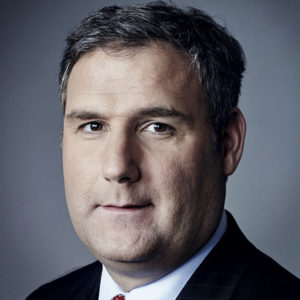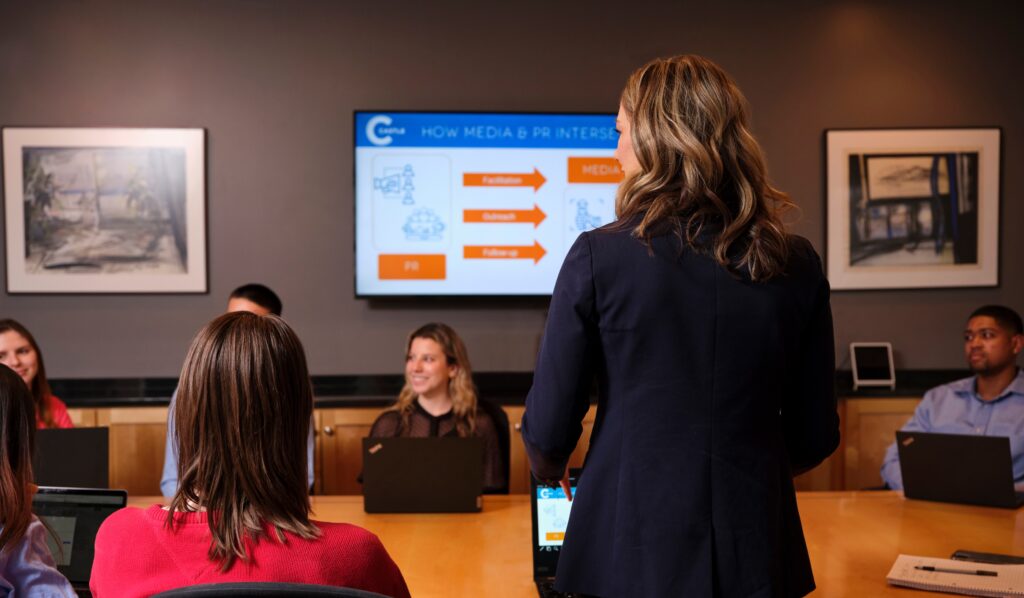Contentious press conferences. Tweet storms. Daily protests. Late night comedy. In this unusual political climate, it’s hard to keep up with everything that’s happening. SVP Hilary Allard recently reached out to fellow UMass journalism grad Mark Preston, executive editor at CNN Politics, (@PrestonCNN) who was kind enough to take time out of his busy schedule to answer a few questions about covering the election, the new administration and the future of journalism.
Hilary: What were the unique challenges of covering the election this year?
Mark: While this may be an overused phrase, it is fair and quite accurate to say that this was an election like no other. It took conventional wisdom, in terms of politics and covering a presidential campaign, and tossed it out the window. Businessman, and now President, Donald Trump tapped into an anger and frustration that most politicians and journalists missed, and it helped him win the White House.
While the economy showed signs of rebounding, it didn’t mean that people were feeling the positive effects. And Trump was able to convince voters – specifically in Florida, Michigan, Ohio, Pennsylvania and Wisconsin – that he would create jobs. He now has four years to follow through on his promises.
The “challenges” of covering the 2016 presidential race ranged from the large size of the Republican presidential primary field to the surprising competitive challenge by Sen. Bernie Sanders to Secretary Hillary Clinton for the Democratic nomination, and the unpredictability of Trump. Each day of the 2016 campaign brought more news, a different angle to an issue and a logistical challenge to cover it all.
Hilary: In our digital, data-driven age, what do you think election coverage will look like in the next two cycles?
Mark: Data is still king as a political tool and a measuring stick to gauge public sentiment in journalism. But data is useless unless used in an effective way. News organizations will need to invest in more “on the ground” reporting – away from the campaign bubbles – to understand what people are thinking and why. Public polling was harshly criticized in this past election for getting it “wrong,” but this is not entirely correct. While there were issues with public polling – those errors were focused on a few state polls – it just so happened those states helped Trump win the election. Heading into the midterm and future presidential elections, pairing polling and enhanced on the ground reporting should provide a much more accurate picture of the presidential race in 2020. I expect we will also see more “alternative” options for information in the next two elections, if not the next two weeks. It really is up to viewers and readers to be more diligent in knowing where they are getting their information and cutting through this white noise to ensure it is a factual report.
Hilary: Twitter is playing a prominent role as a communication platform in the new administration, which in turn, leads to media coverage. What types of challenges does that present in covering the administration?
Mark: There has been a lot of talk in the public square about whether to report on everything President Trump says on Twitter. I am a firm believer that the media would be negligent to ignore his thoughts, statements and criticisms that he expresses in 140 characters or less. The President is opening up a window, unlike anything we have seen, into his thought process and decision making. His high praise of an aide, who just appeared on television, or his frustration over a situation such as the 9th Circuit’s ruling on the “Travel Ban” helps the media understand his mood at that given time. The President’s tweets should be held in the same regard as a public statement or White House news release.
Hilary: How has the practice of journalism evolved since you were at UMASS?
Mark: When I graduated UMass, I didn’t have the luxury of the internet. Research was done the old fashion way, by going to government buildings and thumbing through records. There was no such thing as social media, and you had the “luxury” of time to develop a story. Now, we live in a 60-minute news cycle – if the story is not initially groundbreaking, it will last about an hour, maybe a day before being forgotten. Because of this accelerated news environment, journalists need to be judicious in their time and what story threads to pursue.
For me, and I suspect the average person, there is information overload nowadays. But I think it is a good thing that there is more information rather than less. The challenge, as I noted earlier, is being able to decide what is false information or real news. Also, social media has provided a platform for journalists to interact with viewers and readers – a concept that was unheard of 10 years ago. This can be useful at times and even the harshest critics, I have found, appreciate the response.
As for the future, the delivery of news may expand into different outlets, but journalism at its core will not change. There are only so many ways to present a story – and only one way to really tell it: factually.
















